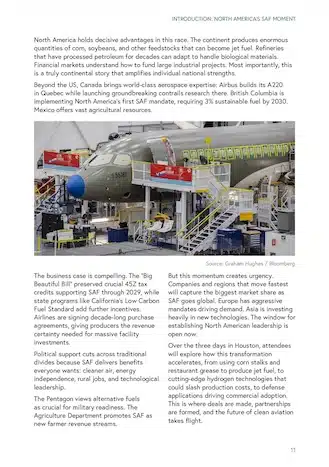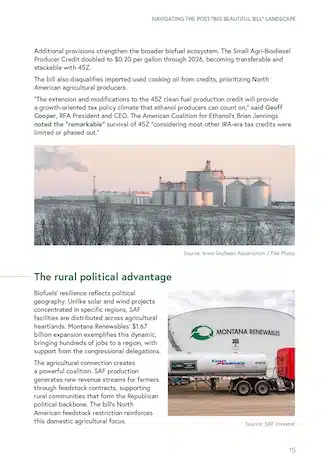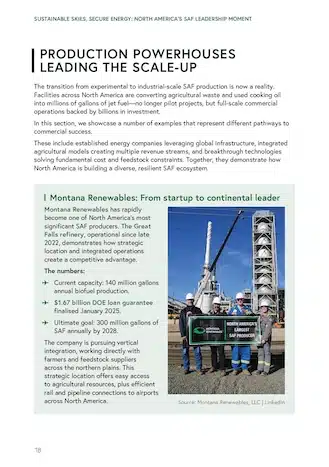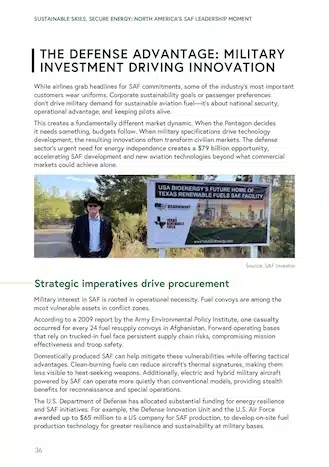REPORT
North America’s
SAF Leadership Moment
North America’sSAF Leadership Moment
Our report explores how North America is rapidly scaling SAF production, driven by diverse interests and backed by strong policy, investment, and the growing demand for cleaner energy in aviation.
Introduction
In early 2024, U.S. sustainable aviation fuel (SAF) production capacity stood at just 2,000 barrels per day from two facilities: World Energy’s plant in Paramount, California, and Montana Renewables’ facility in Great Falls, Montana. By July 2025, capacity has exploded more than fifteen-fold to over 30,000 barrels per day.
What began as a niche experiment is rapidly becoming a major industry.
An unusual but powerful alliance is driving this transformation: Environmental groups are pushing for cleaner skies, military planners are worrying about fuel supply vulnerabilities, airlines are facing investor pressure to cut emissions, farmers want new markets for crops and waste, and rural communities are seeking economic opportunity.
Produced in conjunction with the upcoming Sustainable Aviation Futures North America Congress in Houston, scheduled from 14 to 16 October 2025, this report highlights key players, policy developments, and the economic and strategic advantages driving the SAF progress, while also emphasizing the urgency to act as global competition intensifies





Key Insights
Explosive growth trajectory
North American SAF production capacity has increased fifteen-fold from 2,000 to over 30,000 barrels per day in just one year.
Continental advantage
North America uniquely combines U.S. agricultural resources and capital markets, Canadian aerospace innovation and policy, and Mexico’s vast untapped feedstock potential under integrated trade frameworks.
Military-driven innovation
The defense sector’s $79 billion opportunity is set to accelerate SAF development, driven by military demand for energy independence and operational advantages.
Revolutionary cost reduction potential
Natural “white” hydrogen discoveries could dramatically reduce e-fuel production costs to competitive levels, with extraction costs as low as $0.50/kg versus $6/kg for green hydrogen.
Beyond carbon benefits
SAF delivers 50-70% reduction in contrail ice crystal formation, addressing aviation’s 20-30% non-CO2 climate impact.

